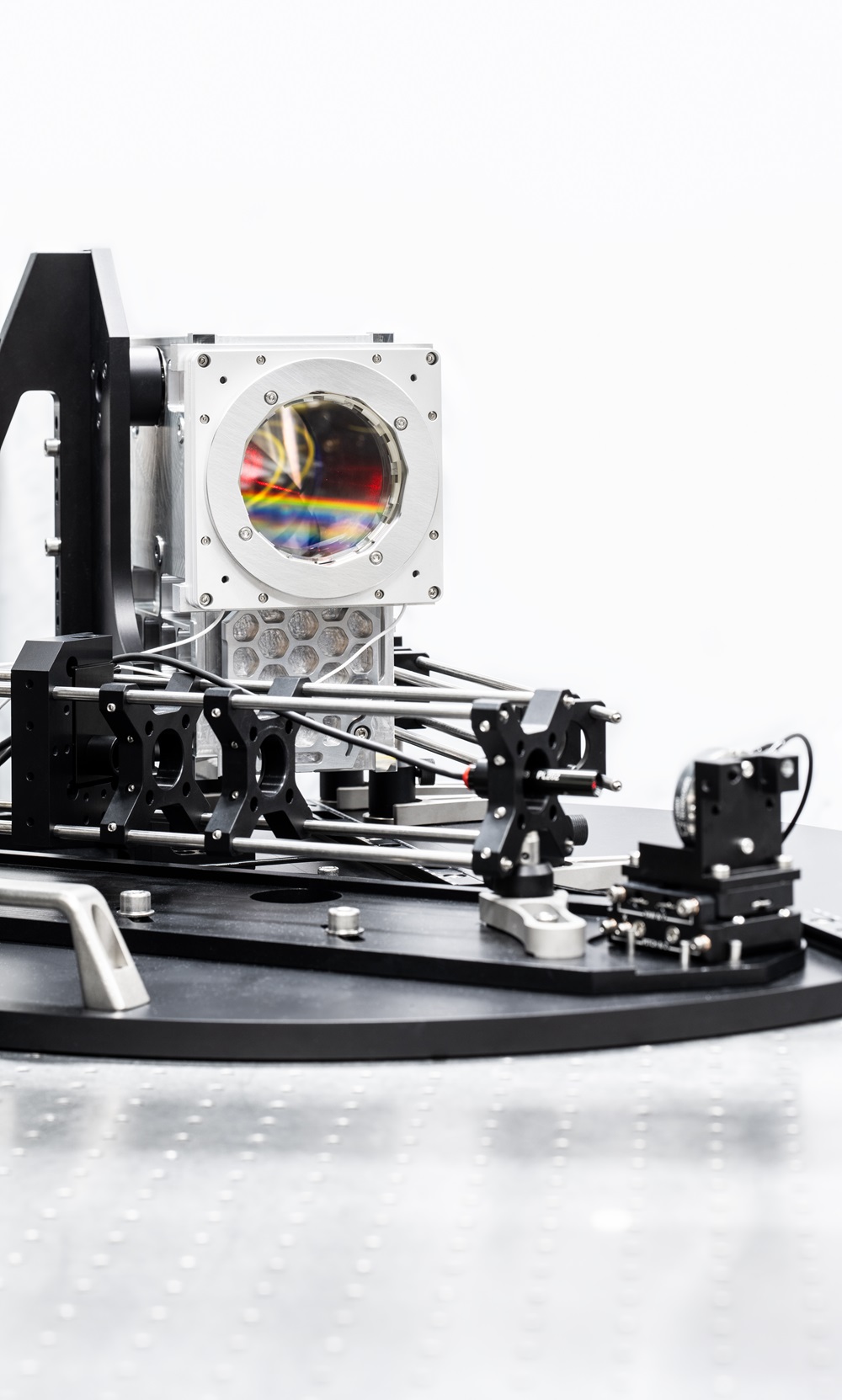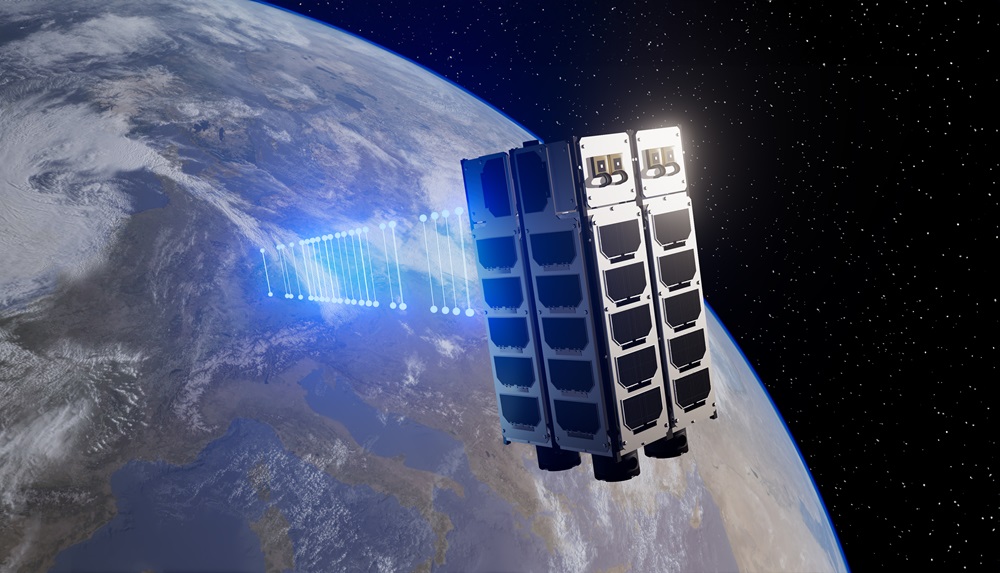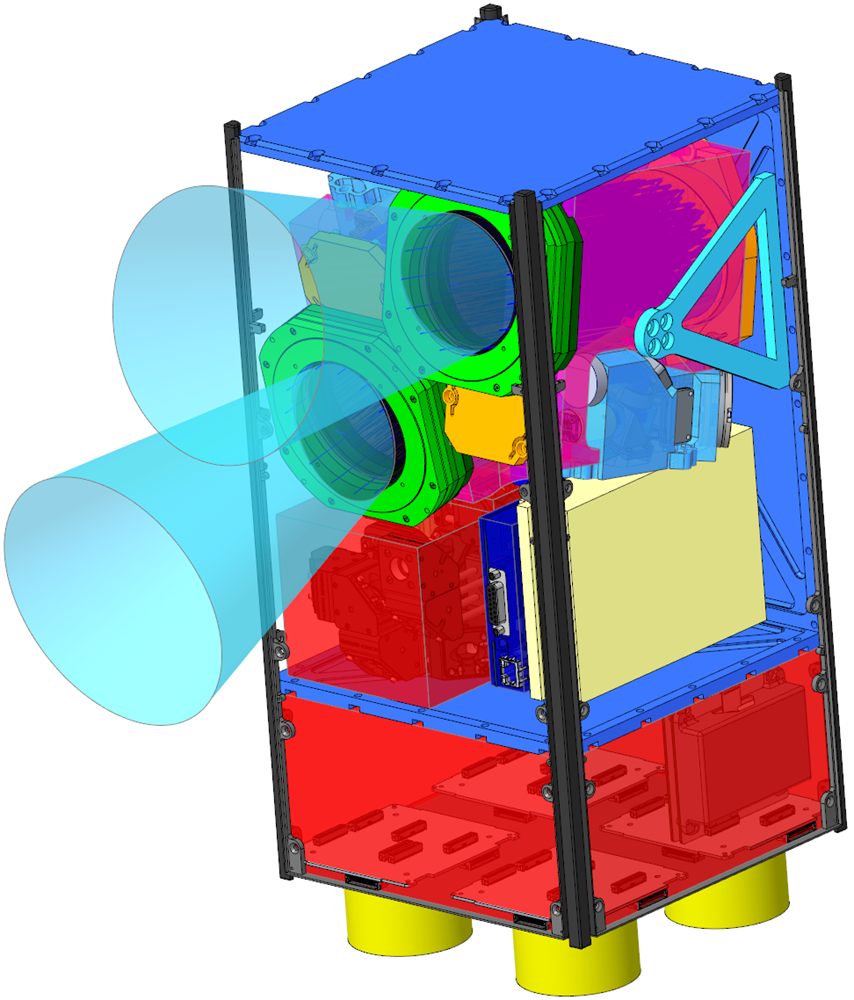Project CubEniK develops hitherto smallest design for payload of satellite-based quantum key distribution
Mini satellite wants to take quantum communication to space
Researchers from Jena, Würzburg and Potsdam have successfully developed a design for the smallest system of its kind so far to take highly secure quantum communication to space: Led by Fraunhofer IOF, the project CubEniK developed an ultracompact payload for a satellite the size of a shoe box, a so called “CubeSat”. The goal of the mini satellite is to transmit a secure quantum key over a distance of 300 kilometers between two ground stations in Jena and Munich.
When Alice and Bob talk to each other, no one is listening. No overhearing, no eavesdropping. How is that possible? Alice and Bob are transmission and receiver units. They use quantum key distribution (QKD) for total confidentiality. In this process, entangled photons are sent between them to generate a secure (quantum) key for data encryption. The transmission of such entangled photon pairs on the ground is possible in various ways, for example via optical fiber networks. However, the maximum distance between these networks is generally limited to 200 kilometers, because quantum keys cannot be amplified readily within fiber. Accordingly, there is a high demand for solutions that can also cover greater distances - potentially even global networks. The idea: the use of satellites in space. But conventional satellites are expensive, large, and thus resource intensive.
Development of an ultracompact payload for a “CubeSat”
The project CubEniK team has addressed this problem. Led by the Fraunhofer Institute for Applied Optics and Precision Engineering IOF in Jena, the research consortium developed an ultracompact payload for a microsatellite, also known as CubeSat. “Our CubEniK system can fit into a 16U CubeSat”, explains Erik Beckert, head of the department for Opto-Mechatronical Components and Systems at the institute in Jena. In specific terms that means: “The satellite’s dimensions are 20 x 20 x 40 centimeters, which means the system designed at Fraunhofer IOF is the smallest of its kind so far”.
It is this compact design in particular that offers a crucial advantage for quantum communication in space, because: Every gram of weight counts for the transport of technology and humans into space – the smaller and lighter, the better. This is why CubeSats have become popular, as they are a class of nano- or microsatellites. They offer a minimal footprint that allows them to be carried as a secondary payload on larger launch missions. Compared to the launch of an additional satellite, it is more efficient and cost-effective for technologies to be transported into space in this way. With this in mind, the CubEniK researchers have set themselves the goal of packaging the complete QKD unit into the smallest possible form so that it can be launched into space as part of such a CubeSat as cost-effectively as possible.
The goal of the CubEniK system is to send a secure quantum key with a length of 256 bits to two ground stations, 300 kilometers apart, in Jena and Oberpfaffenhofen near Munich during one satellite flyover in a low Earth orbit. This key length could serve as a master key in high-security modules and thereby ensure data sovereignty in sensitive areas such as the financial industry or governmental authorities.
Components and functionality of CubEniK systems
Apart from Fraunhofer IOF, the CubEniK research consortium consists of two Fraunhofer spin-offs – Quantum Optics Jena GmbH and SPACEOPTIX GmbH – as well as the Center for Telematics in Würzburg and DIGOS GmbH in Potsdam. Fraunhofer IOF researchers developed the opto-mechanic design of the payload. Besides two telescopes based on off-the-shelf technology from SPACEOPTIX, the CubEniK system is made up of a fine pointing assembly (FPA), a fiber coupler and a coarse pointing assembly (CPA). They are comprised in a space that was designed additionally within the envelope of the telescopes. “The FPA and CPA are used to point the beam as it is directed toward the ground stations and stabilize this connection”, explains Fraunhofer researcher Daniel Heinig, who is overseeing the project in the department for Emerging Technologies at the institute. “The beam is pointed via a piezo-driven tip-tilt mirror for precise steering and via two rotatable wedge prisms in the CPA that allow the beam to be tilted up to 11 degrees”. Thus, the unit that will be installed in the satellite can be pointed very precisely to the ground stations.
In addition to the telescopes and pointing assemblies, the CubEniK uses a photon source that is palm-sized and fit for space flights, which is also developed at Fraunhofer IOF in Jena. It must generate many millions of entangled photon pairs per second during the satellite flyover to enable secure communication and transmit the highly secure key through the attenuating atmosphere to the ground stations.


